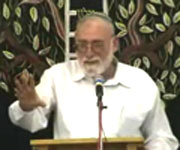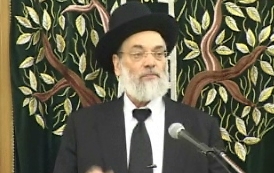Beit Midrash
- Sections
- Chemdat Yamim
- Ein Ayah
Ein Ayah: There are two general apparatuses through which a nation or an individual can prepare themselves for the divine light and pleasant aura to take hold upon them. One is purity, which is achieved when people remove themselves from evil, unseemliness, weakness, and lowness. The deeper the desire to escape from the place in which Bnei Yisrael experienced weakness, such as lack of resolve to connect themselves to Torah and all that is good, the greater the degree of blessing of Hashem that would come upon them, bringing them ever closer to the divine light. According to this characteristic in the heart of man, the main action one takes is to move away from the weakness (which Chazal attribute to the encampment of Refidim, which shares a root with the word for weakness). Diligence and strength are blessings of Hashem, especially as one steadily increases in diligence. This occurs when one uses his diligence more firmly to embark upon goodness by distancing himself from weakness that is contradictory to the power of sanctity.
It is possible to think that when one truly recognizes the destructive element of that which is spiritually unseemly and is a sign of weakness of resolve, he immediately reaps the benefit of leaving evil, and all the preparations for good are in place. However, this is not so. Rather, continual steps need to be taken to climb in levels of sanctity. This is represented by counting the days going forward from when they arrived at the good encampment at which the spirit of Hashem was imbibed and where the power of good could grow and be strengthened. The number of days shows the extent of levels of improvement in the height and depth of goodness.
Once Bnei Yisrael traveled from Refidim, the place at which their hands were weak in Torah and they fell into conflict (see Shemot 17:7), to come in agreement to the mountain of Hashem with thoughts of sanctity and of repentance, with unity and peace, they already had a way to note that the day of receiving the Torah was coming. The second approach, though, posits that leaving the bad place was on the same day as coming to the new, good place, and indeed it was done with immediacy and an air of skipping straight to the destination. The light of repentance emanates from that lofty secret within which time and that which is related to it, as well as gradual development and that which is related to it, have no place. That is why according to this approach, the counting comes from the time of encampment and not from the traveling. This is, after all, the place where the blossoming of "the flowers of sanctity" occurred to the point that the "fruit" emerged on the sixth day.
Rav Acha bar Yaakov posited that the leaving behind of evil alone not only brought cleanliness and purity to undo the negative but even included a lot of light of wisdom and lofty sanctity. So, leaving behind weakness of resolve includes an illuminating content as a means of acquisition, and is counted in the accumulation of positive along with that which was gained in the encampment. The two together complete the great characteristic of the path of the righteous, which is a glowing light that increases until full daylight (see Mishlei 4:18).

Who Cares Who Said What?! Why Rabbis Always Quote
Ein Aya Shabbat 5,13
Rabbi Ari Shvat | Shvat 5783

The Benefits of Torah and of Eating
Various Rabbis | 5770

Natural Preparation to Do
Adapted from Ein Ayah, Shabbat 9:76
Various Rabbis | Tishrei 25 5780
























